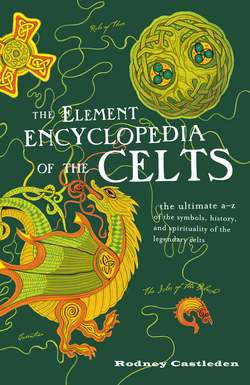Читать книгу The Element Encyclopedia of the Celts - Rodney Castleden - Страница 37
WHO WAS ARTHUR?
ОглавлениеThis scenario converges on the idea that Arthur was primarily the King of Dumnonia. This ancient kingdom is now the English West Country, consisting of Cornwall, Devon, Somerset, and Dorset. Gildas’s peculiar account of the state of Britain, The Ruin of Britain, is really a tortured lament about the poor leadership shown by the Dark Age kingdoms that occupied the English West Country and Wales in the first half of the sixth century. This region coincides exactly with the fourth-century Roman administrative province of Britannia Prima, and it implies that after the Romans abandoned Britain some vestiges of the Roman administrative structure remained.
Certainly by AD 314, when the names appear in the Verona List, Britain was formally divided into four provinces: Prima, Secunda, Maxima Caesariensis, and Flavia Caesariensis. It is possible to visualize a loose confederation of Dark Age kingdoms still functioning in the sixth century within the boundaries of Britannia Prima.
Perhaps the kings of this province went their separate ways most of the time and came together only when there was a common danger. That common danger was the approach of the Saxon colonists, so the many small war-bands of the separate kingdoms needed to be coordinated. In Gail, the Bibracte council in 52 BC agreed on a common strategy: to join forces and resist Rome under the war leadership of one of their kings. In exactly the same way the kings of Britannia Prima agreed to resist the encroachment by the Saxons; and their choice of war leader was Arthur. He was to be dux bellorum, the leader of battles, while that threat existed.
The dates for Arthur’s first and last battles, 516 and 537, give us the span of his later military career, and they imply that he was born in about 475. This would have made him 41, a mature and accomplished commander at the time of Badon, and 62 at the time of Camlann.
A pedigree of unknown reliability exists in the Welsh tradition. Here Arthur was the son of Uther and Ygraine (or Eigr). Ygraine was the daughter of Amlawdd Wledig, who married Gwenn, daughter of Cunedda Wledig. Wledig or gwledig means “king” or “overking,” so Arthur’s maternal line at least was royal. Ygraine had a sister Reiengulid, who was the mother of St. Illtud, which is how Illtud comes to be Arthur’s cousin.
The lack of a well-authenticated (paternal) pedigree for Arthur can be interpreted in many ways. Some say it shows he never existed, while others see it as evidence that he was not of royal blood and others as evidence that he was a usurper. Whatever his origins, Arthur became a king, then overking, and probably through prowess more than birth.
